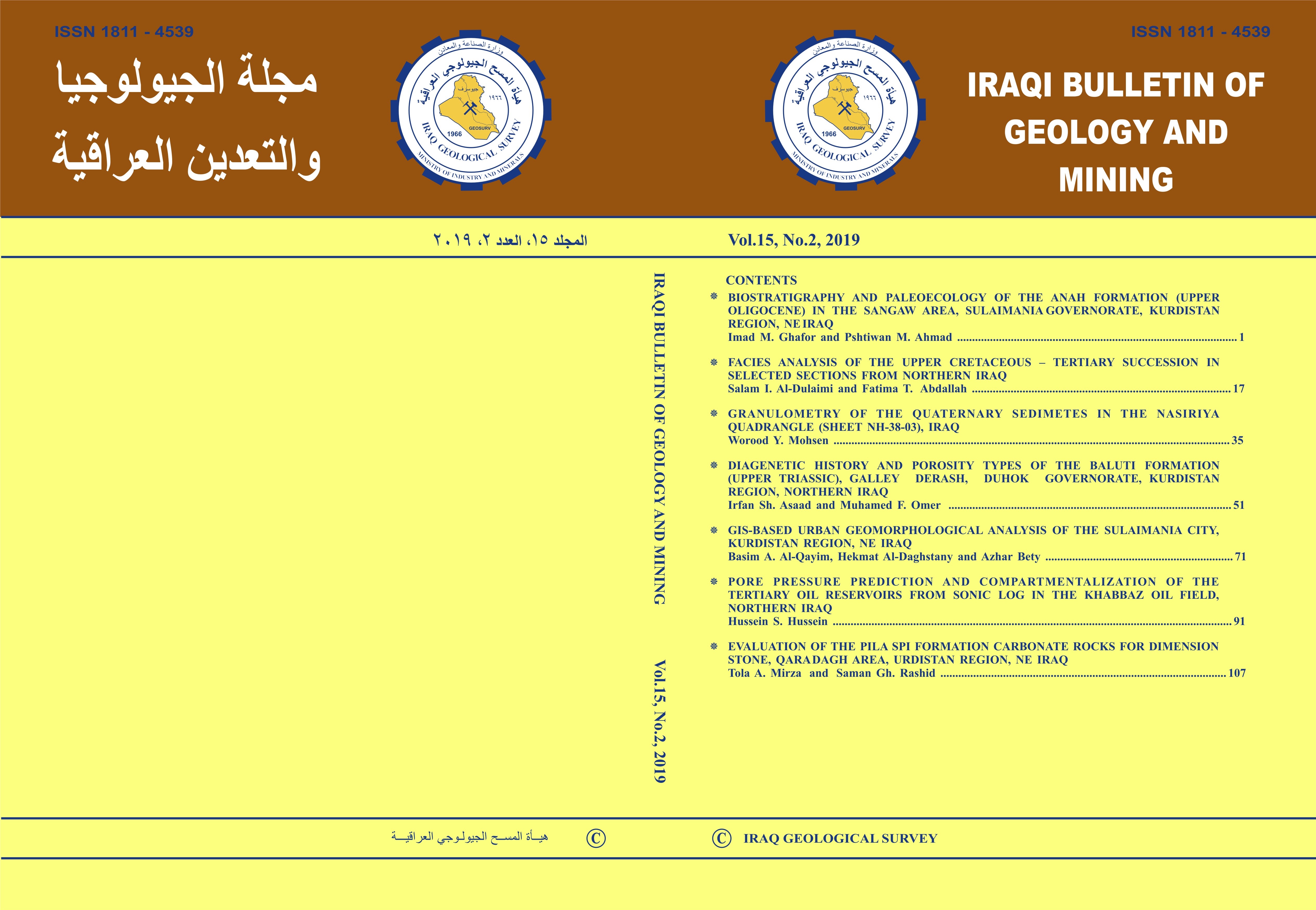Abstract
Biostratigraphy and paleoecology of the Anah Formation are investigated for the first time in the Sangaw area, Sulaimania Governorate, Northeastern Iraq. Forty species of larger foraminifera and skeletal fragments of brachiopod, coral, pelycepods (bivalves), gastropods, bryozoan and algae shell, are described in seven samples collected from one section near the Pungala village. Based on the distribution of the larger benthic foraminifera and other skeletal grains, two assemblage biozones of Upper Oligocene (Chattian) age have been recognized. During the Chattian, the carbonate deposits of the Anah Formation in the studied section are mostly composed of coralline red algae and large flat benthic foraminifera. The biotic associations identified in this study suggest that the carbonate sedimentation of the Anah Formation thrived in tropical to subtropical waters under oligotrophic to mesotrophic middle ramp environment with normal seawater salinity to a higher salinity inner ramp setting and at water depths that ranged from 40 to 80 m.
Keywords
Anah Formation; Oligocene; Chattian; Biostratigraphy; Paleoecology; Larger benthic foraminifera
Abstract
يتضمن البحث الحالي دراسة الطباقية الاحيائيه والبيئة القديمة لتكوين عنة لأول مرة في منطقة سنكاو، محافظة السليمانية في اقليم كردستان، شمال شرق العراق. أجريت هذه الدراسة على سبعة نماذج من الحجر الكلسي الغني بالمتحجرات جمعت من مقطع واحد قرب قرية بنكالا. تم تشخيص أربعين نوعا من الفورامنيفرا القاعية الكبيرة والمتحجرات الأخرى, وبالاعتماد على هذه الأنواع من الفورامنيفيرا والمتحجرات الاخرى، تم التعرف على نطاقين احيائين وعلى اساسهما جرى تحديد عمر التكوين في هذا المقطع بالاوليغوسين الأعلى (جاتين). تم اسنباط البيئة القديمة من خلال دراسة التنوع الاحيائي لتكوين عنه حيث ان الدلائل تشير الى ان التكوين ترسب في مياه بحرية استوائية الى شبه استوائية ضمن بيئة منصة وسطية ذات ملوحة اعتيادية الى منصة داخلية ذات ملوحة اعلى وفي عمق تراوح مابين 40 – 80 م.
